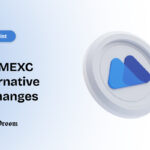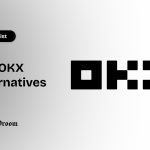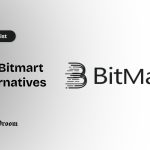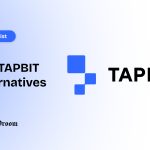Introduction: A Conversation Every Canadian Needs to Have
If you’re a Canadian, you’ve felt the squeeze. The cost of groceries, gas, and especially keeping a roof over your head seems to climb relentlessly. While official inflation numbers may fluctuate, the reality for many households is a budget stretched thin, with shelter costs in particular rising far faster than wages. This isn’t just a feeling; a recent study found that 44% of Canadians are now considered financially vulnerable, a sharp increase from just five years ago.
- Introduction: A Conversation Every Canadian Needs to Have
- 1. It’s a New Kind of Money, and It’s Worth Understanding
- 2. It’s a Direct Response to Canadian Economic Realities
- 3. It’s a “Made-in-Canada” Innovation Story
- 4. It’s Changing the Rules of Investing
- 5. It’s the Gateway to Our Technological Future
- Conclusion: An Essential Part of Your Financial Toolkit
At the same time, many of us feel a growing disconnect from our foundational institutions. Trust in government is shaky, and our relationship with the big banks is often one of necessity, not loyalty. While most Canadians are “satisfied” with their bank, only about half feel their bank truly values them or has their best interests at heart. It’s a system that works, but many wonder if it could work better for them.
It’s in this uniquely Canadian context—one of high living costs and institutional skepticism—that Bitcoin becomes more than just a headline. It represents a different way of thinking about money, ownership, and trust. Born from the 2008 financial crisis, Bitcoin is a digital currency that operates without any central authority. For Canadians looking to navigate today’s challenges, understanding it is no longer just for tech experts; it’s a crucial part of modern financial literacy.
1. It’s a New Kind of Money, and It’s Worth Understanding
Imagine a version of money that isn’t controlled by any bank or government. That’s the core idea behind Bitcoin. In our current system, we rely on banks to act as trusted middlemen for all our transactions, but this adds costs, delays, and gives a handful of institutions immense control.
Bitcoin offers a different model built on a technology called the blockchain. Think of the blockchain as a digital public record book that everyone can see but no one can alter. When a transaction happens, it’s added as a “block” to a permanent, unchangeable “chain.” This process is secured by a global network of computers in a competition called “mining.” This security system is designed to make cheating incredibly expensive and unprofitable, ensuring the network remains honest and secure.
Crucially, unlike any fiat dollar, which can be diluted when more money is printed, Bitcoin has a hard, unchangeable limit of 21 million coins. This supply is written into its code. New bitcoins are released at a predictable, slowing rate, making it a “disinflationary” asset. This predictable scarcity is why many call it “digital gold”—a potential way to store value that is shielded from the inflationary pressures that can erode our savings over time.
2. It’s a Direct Response to Canadian Economic Realities
This isn’t just theory; it’s about your wallet. The persistent rise in the cost of living, especially for essentials like shelter and food, means the purchasing power of the dollar in your pocket is shrinking. Bitcoin, with its fixed supply, offers a fundamental alternative to a monetary system where new money can be created at will. While its price is volatile, its long-term design is to resist the very currency debasement that fuels inflation.
This matters even more when you consider Canada’s banking landscape. Our financial system is dominated by an oligopoly of five major banks, which enjoy some of the highest profitability in the world—at a cost to consumers. Many Canadians feel like just a number, paying high fees while feeling undervalued. It’s no surprise that nearly half of us are open to exploring banking alternatives.
For those caught between rapidly inflating housing costs and a banking system they don’t fully trust, Bitcoin presents a path toward greater financial sovereignty. It’s a system for storing and sending value that you control, operating completely outside the traditional institutions that are a source of frustration for so many.
3. It’s a “Made-in-Canada” Innovation Story
This global shift isn’t happening somewhere else; it’s happening right here at home. Canada has been a quiet leader in the digital asset space, creating a regulated environment for innovation to flourish. We were the first country in the world to approve spot Bitcoin ETFs, giving everyday investors a simple and secure way to get exposure through their RRSP or TFSA, years before the U.S. followed suit.
Canada is also a major hub for Bitcoin mining, the backbone of the network. Our access to affordable and clean energy, particularly hydro and nuclear power, has made us a prime destination for this new industry, with Canadian-domiciled companies like Hut 8 Corp. (TSX: HUT) and Bitfarms Ltd. (TSX: BITF) trading on our stock exchanges.
This bitcoin-friendly environment has allowed homegrown companies to lead the way. A prime example is Matador Technologies Inc. (TSXV: MATA, OTCQB: MATAF, FSE: IU3), a Toronto-based public company building for this new financial future. Matador currently holds 77.4 BTC and BTC equivalents. Under its newly approved treasury strategy, the Company intends to increase its Bitcoin holdings to 1,000 BTC by 2026, escalating to 6,000 BTC by 2027. To achieve this, Matador has secured a CAD$900 million base shelf prospectus, enabling equity, debt, or unit issuances over 25 months and is evaluating a suite of financing channels including ATM equity, structured financings, BTC-backed credit lines, non-core asset divestitures, and strategic partnerships. In July 2025, Matador also executed a secured convertible note facility of up to USD $100 million with ATW Partners funding $10.5 million at initial closing, with the remaining capacity subject to customary approvals to accelerate direct Bitcoin purchases for its balance sheet.
4. It’s Changing the Rules of Investing
For anyone with an RRSP or TFSA, the old rules of investing are being tested. The classic 60/40 portfolio of stocks and bonds, long considered the gold standard for balanced growth, is facing new challenges in today’s economy. This has pushed investors to look for new ways to diversify. The old saying about not putting all your eggs in one basket is more relevant than ever.
This is where Bitcoin offers a compelling new tool. As an asset, it’s in a class of its own. Its value isn’t tied to corporate profits or government debt, but to its technology and network adoption. Most importantly for investors, Bitcoin has historically had a very low correlation with the stock market. In simple terms, when the stock market zigs, Bitcoin has often zagged.
This makes it a powerful diversification tool. Studies have shown that adding a small allocation of Bitcoin (typically 1-5%) to a traditional portfolio has historically improved its overall risk-adjusted returns. The question for modern investors is shifting from “Is Bitcoin too risky to own?” to “What is the risk of not owning a small amount of an asset that behaves differently from everything else in my portfolio?”
5. It’s the Gateway to Our Technological Future
Finally, to understand Bitcoin is to get a glimpse of the future. Think of Bitcoin as the first killer app like the first popular website built on a revolutionary new technology: the blockchain. The blockchain itself is the real game-changer, creating what many call the “Internet of Value”. The first version of the internet was for information; this new version is for securely transferring value without needing a middleman.
This technology has the potential to reshape countless industries right here in Canada. Innovators are already exploring how to use blockchain to create secure digital identity systems, give patients control over their own healthcare records, and build more transparent and efficient supply chains. A population that understands the basic concepts of Bitcoin—decentralization, security, and network consensus—is a population that is ready for this next wave of technology.
Conclusion: An Essential Part of Your Financial Toolkit
Learning about Bitcoin is no longer just for speculators. It’s about understanding the powerful forces shaping your financial world. It’s a defensive tool to protect your savings from inflation, a choice that offers an alternative to the traditional banking system, and a way to participate in a growing Canadian industry led by innovators like Matador Technologies. For investors, it’s a new tool for building a more resilient portfolio. For all of us, it’s a key to understanding the next generation of the internet. In an era of economic uncertainty, becoming literate in this technology is an essential step toward securing your financial future.


















![Blockchain Life Promo Code: DROOMDROOM [Top Deal] 27 Blockchain Life Promo Code](https://droomdroom.com/wp-content/uploads/2024/09/Blockchain-Life-Promocode-330x220.jpg)

